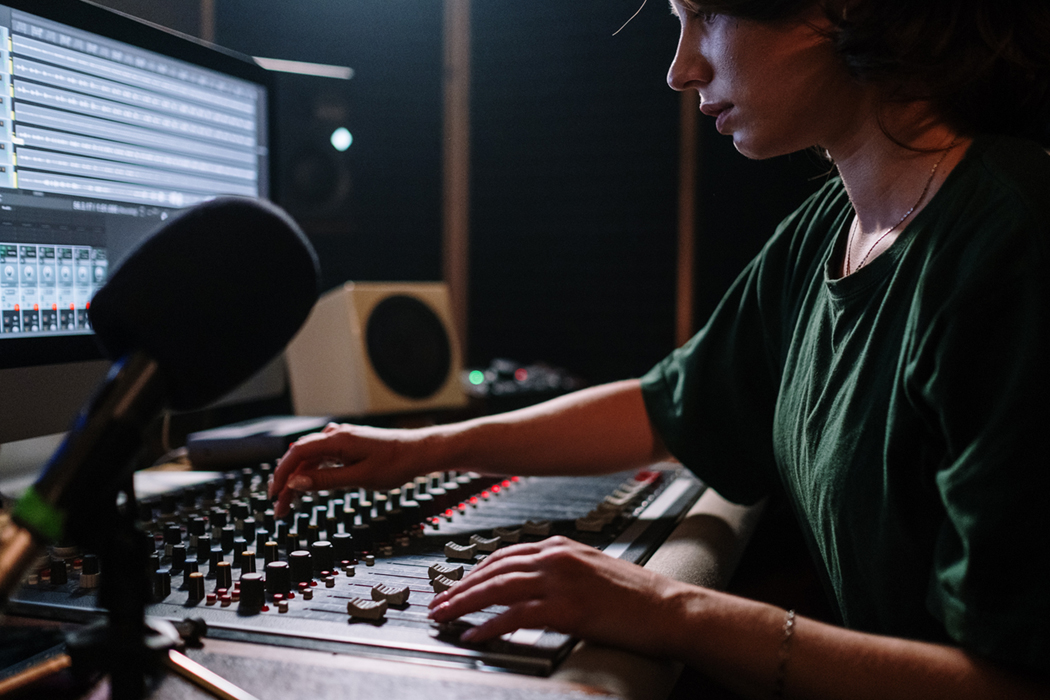
+ Learning to record and mix at home? Soundfly’s online courses on mixing, producing, and beat making can help! Preview them all for free and subscribe for full access.
Back in the day, mixdown sessions consisted of 24 tracks, max. Now, it’s not uncommon for a session in your DAW to consist of 100 or even more.
In addition, producers and engineers continually face the problem of “let’s lay it all down!” — where every idea, lead line, extra take, and party background is included in the session.
It’s tempting to try to fit every little piece in using magical subtractive EQ, fancy-pants compression, and pie-in-the-sky plugins that promise pro-level mixeration no matter the arrangement. But there’s something way more powerful that top engineers use, and which you can too in your productions and mixes: underdubbing.
Is Underdubbing Actually a Thing?
“Underdubbing,” as we’re using it here, isn’t necessarily a real term, but the concept originates from the book, Zen and the Art of Mixing, by the mysterious Mixerman. What it means is simply removing tracks or chunks of tracks — i.e., not including everything that was tracked in the session — from the final mix.
This is one of a mixing engineer’s most powerful tools. Instead of trying to fit 85 guitar parts all clashing and fighting, find the two that work together to communicate the song and drop 83. Or taking the best four-part harmony from a cacophony of 40 backing vocal takes and using that to make a tight choral feel.
It’s a testament to power and will to do more with less.
*Note: “Underdub” is also sometimes used to mean other things, such as a mix that’s missing certain parts.
Comping
Underdubbing can also mean comping similar parts into one track so there aren’t so many things to deal with in the mix. Perhaps a synth effect happens once in the open and never again, while another similar synth rolls in for the verses and another for the chorus. Comping them together can save screen real estate and brain space for the rest of the mix.
You may have to do a little clip gain or automation or even a little EQ automation in this case, but the idea is to find tracks that are similar enough not to need much of this.
Underdubbing in the Arrangement
When Mixerman talks about underdubbing, he’s talking about mix engineers who have to slog through hundreds of tracks, realizing that not everything has to be included.
But you can save the mixer a lot of trouble and get a faster, better mix by underdubbing the arrangement before you even track. Having a solid plan for what goes where — essentially cutting tracks before they’re recorded — will ensure that a mix engineer doesn’t cut out what you find the most valuable.
It also can save you tons of money on studio time. A well-rehearsed, well-planned session goes pretty quickly compared to a creative free-for-all.
This doesn’t mean you don’t brainstorm and try new things. It just means you make some hard decisions early on; getting rid of superfluous information before it muddies the waters in the studio. Cut before the cut.
Underdubbing is Everywhere
As a final note, you may notice as you read blogs and articles in music that some are short and some are long. Try to notice when a 2,000 word article could have been 500 words. Editing an article is much like mixing a song. We can say a lot of cool things, but at the end of the day, we “underdub” anything that doesn’t directly contribute to the central message.
In this case, that’s this:
You don’t have to use every track. Try underdubbing on your next production — and harness the power of getting rid of stuff.
Continue learning with hundreds more lessons on mixing, DIY home audio production, electronic music recording, beat making, and so much more, with Soundfly’s in-depth online courses, like Modern Pop Vocal Production, Advanced Synths & Patch Design, and Faders Up: Modern Mix Techniques (to name a few).





